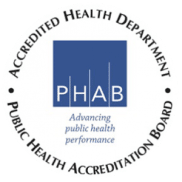Title V originated as part of the Social Security Act in 1935 and is one of the largest federal block grant programs. This legislation was the origin of the federal government’s pledge of support to states in improving the health of mothers and children throughout the nation. Since the original authorization, Title V has been amended several times to reflect the increasing national interest in maternal and child health (MCH) and well-being. One of the first changes occurred when Title V was converted to a block grant program in 1981, resulting in the consolidation of seven categorical programs into a single block grant. These programs were:
- MCH for children with special health care needs (CSHCN),
- supplemental security income for children with disabilities,
- ead-based paint poisoning prevention programs,
- genetic disease programs,
- sudden infant death syndrome (SIDS) programs,
- hemophilia treatment centers, and
- adolescent pregnancy grants.
Over the past three decades, several additional amendments to Title V have occurred which were intended to offer states flexibility with the block grant in responding locally to MCH needs while assuring accountability for the use of federal and state funds. The current requirements include planning activities to support several key MCH indicators and then reporting on progress. Some examples of those indicators are immunization rates, teen pregnancy rates, and the percentage of children with special health care needs whose families partner in decision-making and are satisfied with services received. States are also allowed to develop and report on additional indicators that support local needs.
The purpose of the Title V MCH Services Block Grant Program is to create federal/state partnerships to develop service systems to meet MCH challenges which include but are not limited to the following:
- significantly reducing infant mortality
- providing comprehensive care to women before, during and after pregnancy and childbirth
- providing preventive and primary care services for children and adolescents with special health care needs
- preventing injury and violence
- immunizing all children
- meeting the nutritional and developmental needs of mothers, children and families
The conceptual framework for services of the Title V MCH block grant is envisioned as a pyramid with four tiers of services and for which infrastructure building services is the base. Title V is the only federal program that provides services at all levels.
| Tier of Service | Examples |
| 1st level – infrastructure building services | needs assessment, policy development, quality assurance, planning evaluation |
| 2nd level -population-based services | newborn screening, immunization, injury prevention, oral health, public education |
| 3rd level – enabling services | transportation, case management, WIC |
| 4th level – direct health care services | basic health services, services for (gap filling) CSHCN |


